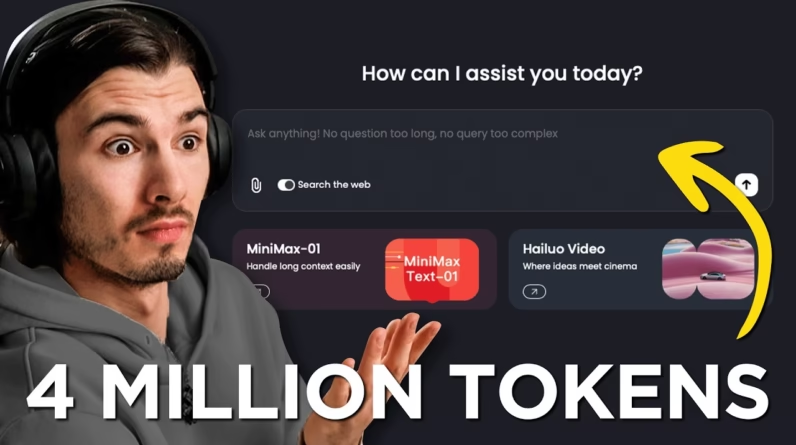
Exploring no-code development platforms can bring a world of opportunities to non-developers. These tools are designed to simplify the process of creating software applications, allowing you to harness the power of technology without needing extensive programming knowledge. By understanding how these platforms work, you can unlock your creative potential and streamline various tasks in both personal and professional life.
In this article, you’ll discover key insights into how these platforms operate and why they are valuable for non-developers. You’ll learn about the impact of fine-tuning existing models, effective techniques for enhancing outputs, and practical examples that showcase the versatility of no-code solutions in real-world applications. With this knowledge, you can confidently venture into the realm of no-code development and elevate your projects.
Table of Contents
Understanding No-Code Platforms

Definition of No-Code Development
No-code development refers to the practice of creating software applications without the need for traditional programming knowledge. Instead of writing code, you utilize intuitive visual development tools that allow you to drag and drop elements to create functional apps, websites, and workflows. This approach makes software development accessible to a broader audience, empowering individuals, regardless of their technical background, to bring their ideas to life.
Historic Development of No-Code Platforms
The rise of no-code platforms can be traced back to the early 2010s, when the demand for faster development cycles and increased productivity became paramount. Initially, these platforms were relatively simple, allowing users to build basic websites or forms. However, as technology evolved and the needs of users grew more complex, so did the platforms. By the mid-2020s, no-code platforms began incorporating advanced features like database integration, API connectivity, and automation tools. Today, they enable users to create sophisticated applications that were once only possible through extensive coding efforts.
Key Features of No-Code Platforms
No-code platforms come with a range of features that simplify the development process. Key features include:
- Visual Design Interfaces: Users can design applications through graphical user interfaces, making it easy to visualize the layout and functionality.
- Pre-Built Templates: Many no-code platforms offer a variety of templates that provide a head start for your project, enabling quick customization.
- Drag-and-Drop Functionality: This allows users to add elements and rearrange components seamlessly without needing to understand programming languages.
- Integration Capabilities: No-code platforms often provide built-in integrations with popular applications and services, enhancing functionality without code.
- Collaboration Tools: Features that allow multiple users to collaborate on projects make it easier to gather feedback and make changes in real-time.
Benefits of No-Code Development for Non-Developers
Empowerment through Accessibility
One of the most significant advantages of no-code development is that it empowers people who may not have a background in programming. With simple interfaces and tools, you can turn your ideas into functional applications without the need for technical expertise. This democratizes the development process and encourages creativity among a diverse group of people.
Speed and Efficiency in Development
No-code development dramatically speeds up the development process. You can prototype, build, and launch applications within days (or even hours), compared to traditional coding, which could take weeks or months. The intuitive nature of these platforms eliminates the need for lengthy development cycles, allowing you to focus on refining your idea rather than getting bogged down in technical details.
Cost-Effectiveness and Budget Management
For individuals and small businesses, hiring professional developers can be costly. No-code platforms significantly reduce development costs, allowing you to allocate your budget toward other areas of your project or business. Additionally, by empowering you to build applications yourself, you can save on ongoing maintenance and updates that typically require developer intervention.
Top No-Code Platforms of 2024
Overview of Popular Platforms
As of 2024, several no-code platforms have gained popularity among users for their unique offerings and versatile capabilities. These platforms include Webflow, Bubble, Adalo, and Glide. Each platform caters to different needs—whether it be web design, app development, or simplifying data management.
Comparison Criteria: Features and Usability
When choosing a no-code platform, consider the following criteria:
- Ease of Use: How intuitive is the interface?
- Feature Set: What functionalities are available to support your project?
- Integration Options: Does the platform easily connect with other tools you use?
- Community Support: Is there a robust community or resources for troubleshooting and learning?
- Pricing: What are the costs associated with using the platform, and do they fit your budget?
Platform Highlights: Webflow, Bubble, Adalo, Glide
Each platform has standout features:
- Webflow: Best for designers and marketers looking to create responsive websites without coding.
- Bubble: A great choice for building complex web applications with extensive functionality.
- Adalo: Focused on mobile app development, making it easier to create applications for iOS and Android.
- Glide: Simplifies the app creation process by enabling users to build apps directly from Google Sheets.
Webflow: A Closer Look
Unique Features and Capabilities
Webflow offers a comprehensive set of design tools coupled with content management capabilities, enabling users to create fully responsive websites visually. Its unique feature set includes animations, interactions, and custom CMS capabilities, allowing for greater creativity while building without code.
Pros and Cons of Using Webflow
Pros
- Design Flexibility: Offers designers a high degree of control over aesthetics.
- Responsive Design: Websites are optimized for different devices automatically.
Cons
- Learning Curve: While powerful, the plethora of features can initially overwhelm new users.
- Cost: Webflow can be pricey, especially for maintaining multiple projects.
Ideal User Profiles and Project Types
Webflow is ideal for designers, marketers, and small businesses that prioritize stunning design and user experience. Projects such as portfolios, brochures, and marketing websites thrive on its capabilities.
Bubble: Functionality and Usability
Core Features of Bubble
Bubble allows users to build complex web applications without code. It supports database management, user authentication, and API integrations. Its visual workflow editor makes it easy to construct logic and workflows.
Strengths and Weaknesses
Strengths
- Robust Functionality: Can handle complex applications that require database interactions.
- Extensive Integrations: Connects seamlessly with various services and APIs.
Weaknesses
- Steeper Learning Curve: More complex than other no-code platforms, which may intimidate new users.
- Performance Limitations: Applications may face performance issues if not optimized properly.
Suitability for Different Projects
Bubble is best suited for startups and individuals looking to develop MVPs (Minimum Viable Products) or complex applications like marketplaces and social networks due to its extensive capabilities.
Adalo: Mobile Focused Development
Highlights of Adalo’s Features
Adalo specializes in mobile app development, providing a straightforward interface that lets you build and publish your application to both iOS and Android platforms. It supports user authentication, notifications, and database functionality.
Benefits and Limitations
Benefits
- Ease of Use: Built specifically for mobile app creation, making it user-friendly.
- Live Preview: Users can instantly see how their app will function on mobile devices.
Limitations
- Limited Customization: Advanced features may be limited compared to other platforms.
- Performance Issues: Applications may experience lag if not optimized for mobile devices.
Best Use Cases for Adalo
Adalo is perfect for entrepreneurs and small businesses looking to develop simple mobile apps, such as local service apps, portfolios, and event management tools.
Glide: Simplifying App Creation
Key Features of Glide
Glide allows you to create applications directly from Google Sheets, facilitating easy database management. It comes with simple templates and rich visual components, making the process user-friendly.
Advantages and Disadvantages
Advantages
- Quick Setup: Users can create apps rapidly with little learning required.
- Integrates with Sheets: Leverage Google Sheets for dynamic data management.
Disadvantages
- Limited Flexibility: May not accommodate complex app needs.
- Dependence on Google Sheets: Not ideal for those seeking a standalone database solution.
Target Users and Applications
Glide is well-suited for small business owners, educators, and non-profits looking for simple solutions, such as event apps, feedback forms, and membership directories.
How to Choose the Right No-Code Platform
Identifying Project Requirements
Before choosing a no-code platform, assess your project’s specific needs. Consider what kind of application you want to build, who your end users are, and what features are critical to your project’s success.
Evaluating Budget Constraints
Budget is a significant factor in your decision-making process. Research the pricing models of different platforms and determine if they fit within your financial plan. Some platforms offer free tiers, while others may have subscription costs or fees based on usage.
Assessing Platform Integration Capabilities
Consider how well the platform integrates with the tools you’re already using. Seamless integration with services like payment processors, CRM tools, or email marketing software can enhance your application’s functionality significantly.
No-Code Platform Reviews
In-Depth Reviews and User Experiences
Exploring user experiences can provide valuable insights into the effectiveness and reliability of no-code platforms. Visit forums, read reviews, and consider joining online communities to gather real-world feedback on different platforms.
Tutorials for Building with No-Code
Most no-code platforms offer a range of tutorials, making it easier for you to learn how to use the tools effectively. Take advantage of these resources to speed up your learning curve and build your applications more efficiently.
Common Challenges and Solutions
While no-code platforms simplify development, you may encounter challenges such as platform limitations or performance issues. Stay informed about common problems users face and discuss solutions in community forums or through tutorials.
Conclusion
Recap of No-Code Development Impact
No-code development has significantly changed the software development landscape, empowering individuals and businesses to create applications quickly and efficiently without technical knowledge. This democratization of development encourages innovation and creativity across various sectors.
Encouragement for Non-Developers
If you’re intrigued by the possibility of creating your applications, there’s no better time to dive in. With numerous no-code platforms available, you can explore your ideas and see them come to life. Remember, you don’t have to be a developer to innovate!
Future Prospects of No-Code Platforms
As technology continues to evolve, no-code platforms will likely become even more sophisticated. With advancements in AI and machine learning, the capabilities of these platforms will expand, enabling even more complex applications to be built without code. Embrace the trend and get ready for an exciting future in the world of no-code development!







